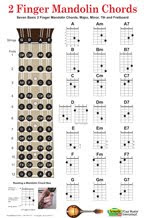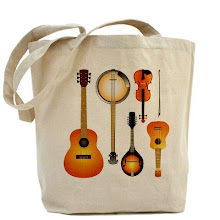By Keith Dean
When first attempting to tackle playing guitar it's perfectly natural for the beginning guitarist to feel a little overwhelmed with new concepts and terminology.
One thing that a lot of new students become confused about is the differences between major chords and minor chords.
Early in the guitar lessons process, many students learn "how" to play major and minor chords, but quite often do so without really understanding "why" they are named "major" and "minor".
From a music "theory" perspective, chords are made up of several individual notes that are put together to form the chord.
The notes that make up a particular chord are chosen according to a simple formula that identifies the notes in reference to their placement within the 8 notes of the major scale.
For example, look at the notes that comprise the "C major" scale below:
C D E F G A B C
As you can see, the scale begins and ends on the "root" note, which in this case is "C".
Each note in the scale is assigned a numerical value from 1 through 8, sequentially. In this case it would look like:
C = 1
D = 2
E = 3
F = 4
G = 5
A = 6
B = 7
C = 8
In their simplest form, chords consist of a "triad" or three notes. The "formula" that we spoke of earlier identifies the three notes of a triad according to the numerical value of particular steps within the scale, as shown above.
In the case of a "major" chord, the formula is this - a major chord triad consists of the 1st, 3rd and 5th steps of the major scale. These "steps" are often referred to as "intervals".
So to determine the notes that make up a C major chord (triad), you simply count the first, third and fifth steps of the C major scale. This brings you to the conclusion that the C major chord is made up of the notes:
C (1st), E (3rd) and G (5th)
This same formula can be applied to all scales, for example, here is a "G major" scale:
G A B C D E F# G
To determine the notes of the G major chord triad, just apply the 1-3-5 formula to the scale. In doing so you will find that a G major chord triad is made up of the notes:
G - B - D (1-3-5)
It's equally as simple to determine the notes in a minor chord triad. The only thing that changes is the formula. In the case of a minor chord triad the notes are determined as such:
1 - (b)3 - 5
Notice that in the case of a minor triad, the third (3) is a "flat", and is called a "flat third".
So to form a minor chord triad, all you have to do is "flat" the 3rd step in the scale, which means to lower that note by an interval of a half step - or in terms of the guitar, lower the note by one fret.
Using the previous example above of the C major scale, the C minor chord triad is formed using the following three notes:
C - Eb (E "flat") - G
...the third step in the major scale is an "E" note, and you make that note a "flat third" by lowering it a half step, resulting in an Eb (E flat) note.
To determine the minor triad notes of other chords simply apply the minor triad formula to the scale notes of that chord.
As in the case of the G major scale, as illustrated above:
G A B C D E F# G
...the first, "flat" third and fifth steps would look like this:
G - Bb - D
...the third step in the major scale is a "B" note, and you make that note a "flat third" by lowering it a half step, resulting in a Bb (B flat) note.
As you can see, determining the notes of a major or minor chord triad is not nearly as complicated as it may seem initially.
Although I constantly console guitar students on the importance of learning how to "execute" on the guitar, over getting too bogged down in music theory early on - it still helps to have a good understanding of the basic theory behind some of the more common concepts that you will use on the guitar day in and day out.
Enjoy!
Over 40, 50, 60? For Free Video Guitar Lessons designed for Active Adults go to
www.adultguitarlessons.com
Keith Dean is founder of
www.AdultGuitarLessons.com and a 30 veteran of stage and studio. He toured extensively as a road musician throughout the US and Europe, was a former lead guitarist for Jason Aldean, and has shared stages with Little Big Town, Wild Rose, Winger, Confederate Railroad and more. He is a published songwriter, owned and operated a successful music store, and has instructed numerous students in guitar.










